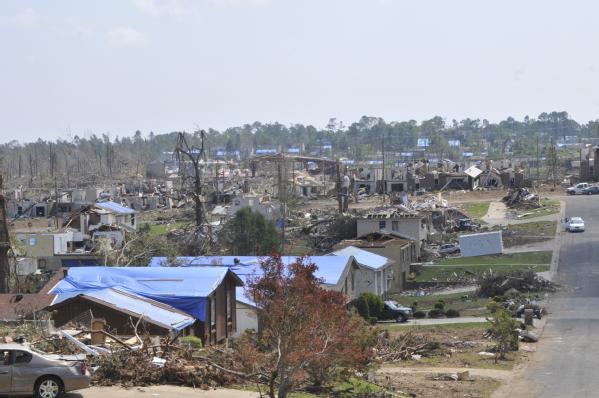What We’re Watching: 7/29/11
Every Friday, we do a “What We’re Watching” blog as we look ahead to the weekend. We encourage you to share it with your friends and family, and have a safe weekend.

Tropical Storm Don
Since our last blog update on tropical storm Don, National Hurricane Center forecasts from the National Weather Service are calling for tropical storm Don to bring heavy rains and high winds to areas of south Texas, starting tonight. Our regional office in Denton, Texas has been in regular contact with the Texas Division of Emergency Management to coordinate any potential response efforts.
Yesterday, the Denton regional office activated its Regional Response Coordination Center to allow for the activation of emergency support functions needed for federal coordination among federal, state, and local communities, should there be a need or request for federal support. There are also Incident Management Assistance Teams available for deployment and Urban Search & Rescue is available to deploy, if needed.
It’s critical that all members of the public in areas that could be impacted by Don take this storm seriously – and stay out of harm’s way. Tropical storms can often create heavy rainfall which in turn causes flooding hundreds of miles inland. Here are some safety tips to remember, in case a hurricane or tropical storm threatens your area:
- Listen to the direction of local officials. Be sure to know your evacuation route in case evacuation orders are given.
- Install straps or additional clips to securely fasten your roof to the frame structure. This will reduce roof damage.
- Driving through a flooded area can be extremely hazardous. Almost half of all flash flood deaths happen in vehicles. When in your car, look out for flooding in low lying areas, at bridges, and at highway dips. As little as six inches of water may cause you to lose control of your vehicle.
For the latest updates on tropical storm Don, visit http://www.hurricanes.gov/, and make sure to visit Ready.gov/hurricanes to get prepared for severe tropical weather. And remember – it’s still early in hurricane season and we expect a very active next couple of months. Now is the time to get prepared, before a storm approaches your community.
National Night Out
Earlier this week, U.S. Fire Administration, Deputy Administrator Glenn Gaines encouraged fire and emergency medical service personnel to partner with law enforcement to promote emergency and fire preparedness by hosting a National Night Out event in their local community. National Night Out is a program to promote neighborhood spirit and public safety-community partnerships, and over 15,000 communities are expected to host local events across the country. Check out his blog post or contact your local law enforcement agency and learn how your fire department or EMS can get involved.
Public Private Partnership Conference
In addition to National Night Out, next week is also the first National Public Private Partnership Conference in Washington D.C. We’ll host interactive workshops, working groups, and discussions led by experts regarding the growing importance of the private sector in emergency preparedness, response, and recovery. Stay tuned to our blog for more details in the coming days and in the meantime, here’s more information on the conference.
White House Blog promotes National Preparedness Month
Finally, we wanted to share a blog post from the White House Office of Faith-based and Neighborhood Partnerships, encouraging faith-based and community organizations to register as a National Preparedness Month coalition member. Coalition members have access to specialized resources for engaging their audience in emergency preparedness, in addition to a discussion forum where they can share their ideas and learn from preparedness initiatives happening in their backyard during September.
Whether you’re a student, parent, school administrator, pastor, business continuity professional, first responder, emergency manager, or a concerned citizen, join the thousands that have signed up and become a National Preparedness Coalition member today.






